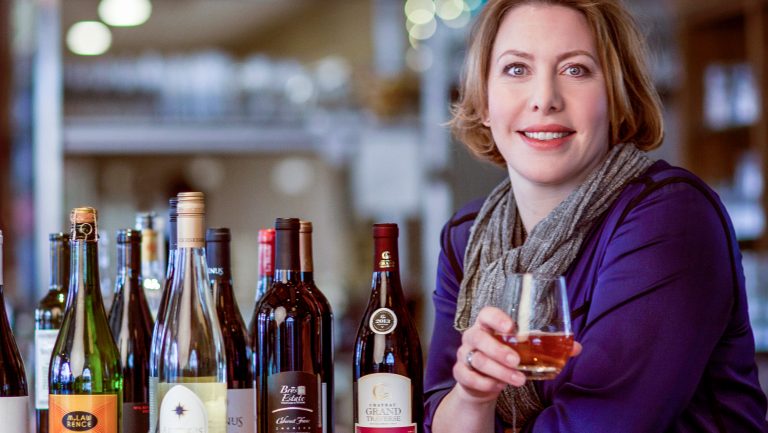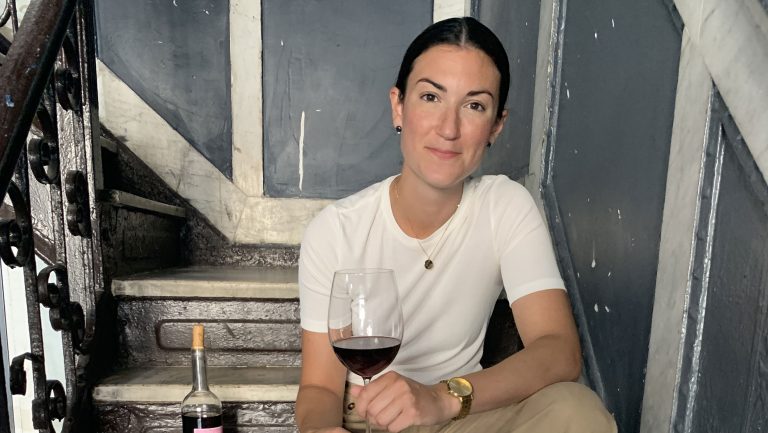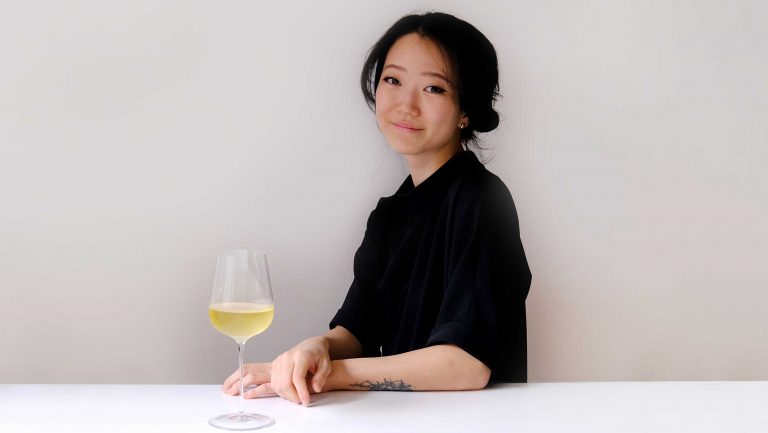In our new series, 5 Bottles I Sold Last Night, sommeliers and wine directors talk about the bottles that they’re selling, giving tips and context for making the sale.
Our beverage programs at The Franklin and Trattoria Stella in Traverse City, Michigan, focus on wines that are made authentically. The desire to sell “authentic” wines came from my experience living in Michigan wine country, and from traveling. I have nothing against large companies that mass-produce wine, but they don’t need my help. Knowing enough people whose livelihoods and families depend on the product they make, seeing how they make wine, and observing their focus and the risks they take, well, that’s who I want to support every day. We also put special emphasis on hand-selling. The staff is there to serve as the navigator for the guest. Our hand-selling strategy is designed to get customers who might be grabbing at familiar straws to try new options.
The Franklin’s wine list is organized by similarities, or palate parallels. Rather than being organized by variety or region, the wines fall into “if you like” categories. For example, under the “If You Like Pinot Grigio” heading, there is a 2015 Aligoté from Burgundy and a 2016 Pinot Blanc from Left Foot Charley, a local winery. Organizing the menu this way helps take the fear out of buying, say, a Cru Beaujolais.

Don’t miss the latest drinks industry news and insights. Sign up for our award-winning newsletters and get insider intel, resources, and trends delivered to your inbox every week.
At Stella, the cuisine is sourced from across the Italian peninsula, and that expansiveness is reflected in the 50-plus-page beverage list. I do engineer some things out of the system. I never sell Pinot Grigio by the glass at Stella because, inevitably, that’s all people will order, no matter what the staff tries to suggest. Instead, I sell a ton of Ribolla Gialla and Catarratto—all these fantastic grape varieties that over-deliver for the same price as a Pinot Grigio that, in many cases, wasn’t nearly as meticulously made.
Here are five wines I convinced guests to try last night. (The prices listed are what we charge at Trattoria Stella).
1. Tenuta di Castellaro Pomice, Malvasia di Lipari and Carricante; Sicily, Italy 2013; $60
This was a classic case of I-want-a-Pinot-Grigio. When the guest realized I didn’t have it, he said, “Fine, just give me something from the north of Italy; I don’t like Southern Italian wines.” I sold him a wine from the island of Lipari, which is about a stone’s throw from Mt. Etna, and where the red and white is named after the soil type—obsidian and pumice, respectively. I opened the wine, sampled them on it without saying what it was, and he said, “Yes! That’s exactly what I wanted!” I then explained that the wine was a blend of Malvasia di Lipari and Catarratto from a tropical island in Southern Italy, which was pretty much the opposite of what he asked for. I’m not trying to trick people—I knew he’d like that wine—but how could he know the wine existed if no one showed him?
2. Poggio al Tesoro Dedicato a Walter, Cabernet Franc, Bolgheri Superiore; Tuscany, Italy 2012; $115
We had a group of golfers and a group of hockey players, and they all wanted Napa Cab. I had already sold out of the Cade Howell Mountain and was trying to think of what to sell these guys, who were adamant about spending $100. The Dedicato a Walter is a Cabernet Franc from Bolgheri and expresses varietal typicity and is delicious year after year. That was my replacement for the Napa Cab, and the guys loved it.
3. Edi Simčič Duet, Merlot, Cabernet Sauvignon, and Cabernet Franc; Goriška Brda, Slovenia 2012; $80
This is a Slovenian wine we’ve been selling since way before Melania Trump. For some reason people don’t know where Slovenia is—is it Northern Europe, is it Russia? Actually, you can pretty much stand over the border. You can have your left foot in Slovenia and your right foot in Italy, and you’re looking at the Adriatic. No one ever gets that it’s so close. With so many of these wine regions they are located within political borders, but when you’re talking about agriculture, agriculture doesn’t care about political borders; it cares about the slopes and the aspects and the soil and proximity to water. When I sold this wine, it was to someone who came in wanting a Bordeaux—they wanted a Merlot because they said they “don’t really like Italian wines.” But we didn’t have a Merlot. When I asked what they usually drink they gave a lot of Right Bank examples—Merlot- and Cabernet Franc-driven styles. I brought them a bottle of the Edi Simčič and made a joke about “you said you didn’t want Italian, so I brought you a Slovenian wine.” They thought it was delicious.
4. Jean-Baptiste Adam Crémant d’Alsace; Alsace, France NV; $55
I had a guest who was incensed that I didn’t have Veuve Clicquot. She was so mad—how could I sell sparkling wine and not sell Veuve Clicquot? That’s where you have to exercise a bit of restraint. I went on this whole story of how much I admire the widow Clicquot, that I think she’s one of the great women of wine history, and I suggested that because of that, something the guest would really enjoy would be another option by a woman who is making wine history in a 400-year-old estate—Adam’s daughter Laure works in the vineyards and cellars with him and is an integral part of the winemaking team. I sold her on the “great women of wine” thing. She loved the wine; it’s delicious. I won’t put the Adam up there with La Grande Dame, but it’s better than the standard Veuve.
5. Clos Cibonne Tibouren Rosé; Côtes de Provence, France 2015; $42
I had a woman looking for a sweeter rosé, although “not White Zinfandel–sweet,” she specified. I had a theory I was testing, that people are attached to what they already understand. Sweetness was a simple element they’d been exposed to, and one they’d become attached to—something they could hang their hat on. In selling this guest this wine I talked to her about the texture and the viscosity, and how the wine is aged for a while under flor, not unlike sherry, which creates a spectacular texture—akin to what she might expect from sweetness. This is a go-to, easy-to-sell wine that I think is extraordinary—it’s in my top five rosés.
—As told to Julie H. Case

Dispatch
Sign up for our award-winning newsletter
Don’t miss the latest drinks industry news and insights—delivered to your inbox every week.
Amanda Danielson is an advanced sommelier and the owner of the restaurants Trattoria Stella and The Franklin and the retail shop Blue Goat Wine & Provisions in Traverse City, Michigan. She curates all things served in a glass, bottle, or other vessel at both restaurants, but her actual floor time is spent at Trattoria Stella. Danielson is also the co-founder and co-director, with Sean O’Keefe of Mari Vineyards, of the City of Riesling symposium which brings winemakers from around the world to Traverse City for a weekend of global wine education.







